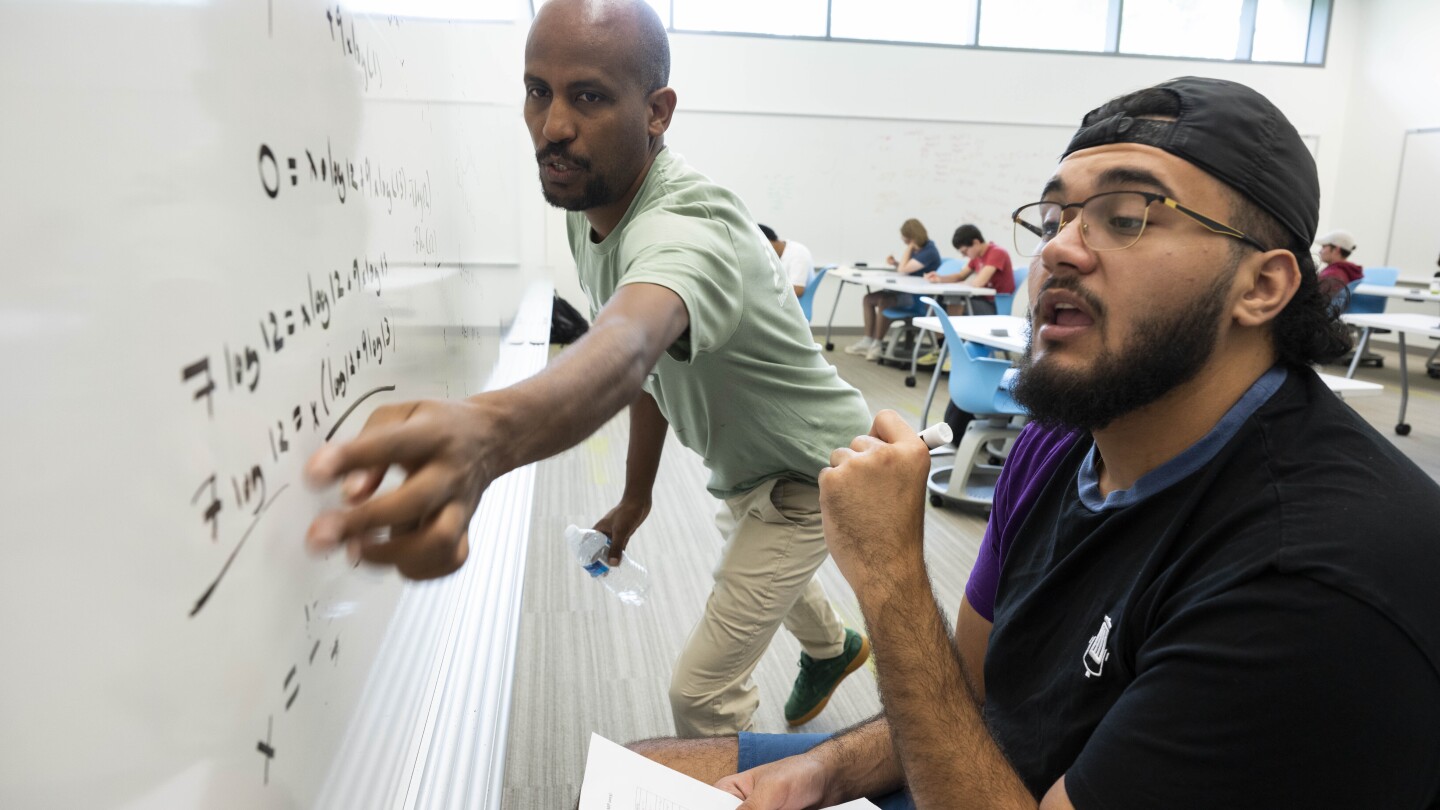Colleges across the country are grappling with the same problem as academic setbacks from the pandemic follow students to campus. At many universities, engineering and biology majors are struggling to grasp fractions and exponents. More students are being placed into pre-college math, starting a semester or more behind for their majors, even if they get credit for the lower-level classes.
Colleges largely blame the disruptions of the pandemic, which had an outsize impact on math. Reading scores on the national test known as NAEP plummeted, but math scores fell further, by margins not seen in decades of testing. Other studies find that recovery has been slow.



As for math, something that Ive noticed over and over again is that if students are explicitly told to solve a specific math problem eg. 145 × 306 = ? they can generally do that but if you give them a problem that requires them to know when to multiply, divide, add, subtract etc. they struggle. They also struggle in finding systems that are analogous to one another and use the same math. eg. limiting reagents and cooking. i.e what do you run out of first? how much stuff can be made given what you have? They can do that for things theyre familiar with but they cant do the exact same type of problem with molecules instead of say… apples and oranges. That kind of weakness wont be caught in their grades or SAT/ACT problems unless they rely heavily on those type of problems which they dont. And its also something that is harder to teach and easier to fall through the cracks during a pandemic.
AND on top of that, online classes are harder to control the use of resources that they shouldnt be using and was arguably not as well prepped and planned for. Teachers simply were not prepared to teach remotely and in some cases eg. labs, you cant really effectively teach the same thing remotely as in person.
Is this what you mean they couldn’t answer? Or are you saying would just be hard to submit answers online?
Denote the methods used and how many of each item can be made in the following baking situations:
Ed has: 4 dozen eggs (thank god prices came down some so he didnt get robbed), 5lbs of sugar, 12lbs of flour, and 5 gallons water.
Item 1 requires: 2 eggs 1lb sugar 2lbs flour
Item 2 requires: 1 egg, 4oz sugar, 300oz flour
Item 3 requires: 500ml water, 250g sugar, 350g flour
The situations I am talking about are things like: “You have 6 pounds of flour, 6 pounds of sugar and 12 eggs. Each cake requires 2 pounds of flour, 4 eggs and 1 pound of sugar to make. How many cakes can be made? What ingredient if any, is left over? How much of that ingredient is left over if any?”
Or being able to work in units of pounds but not grams. They struggle with generalizing what they know. i.e its brittle knowledge. They know how to press buttons but not why
Gotcha, that was my intent of making item 1 easy without conversions. Then 2 conversions, then 3 conversions to metric. Thanks for spending the time to type that out for me. It helps me get a better grasp of it. : ) Hope you have a great day